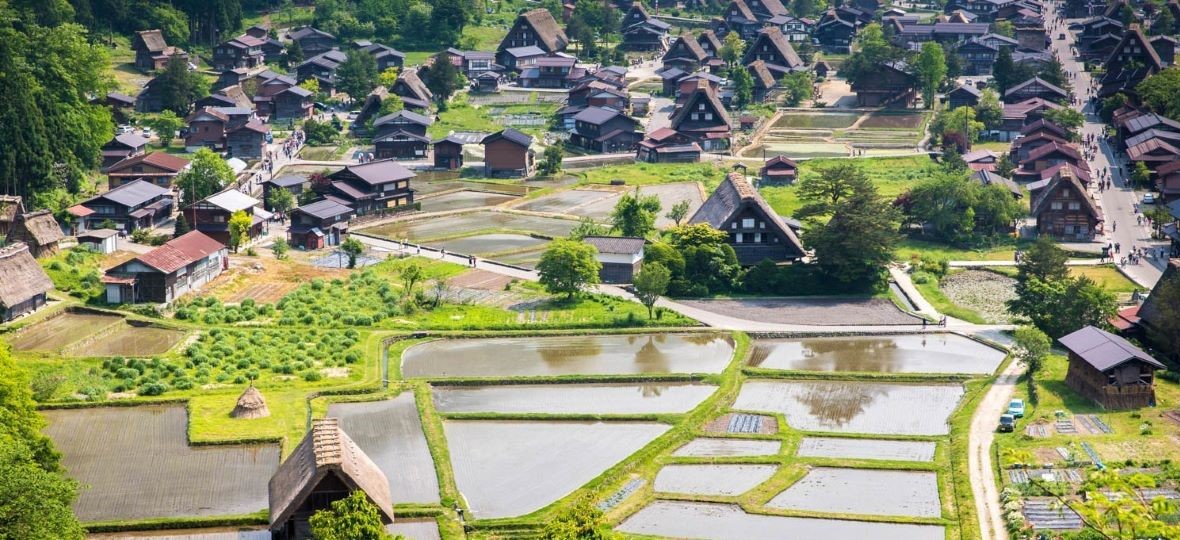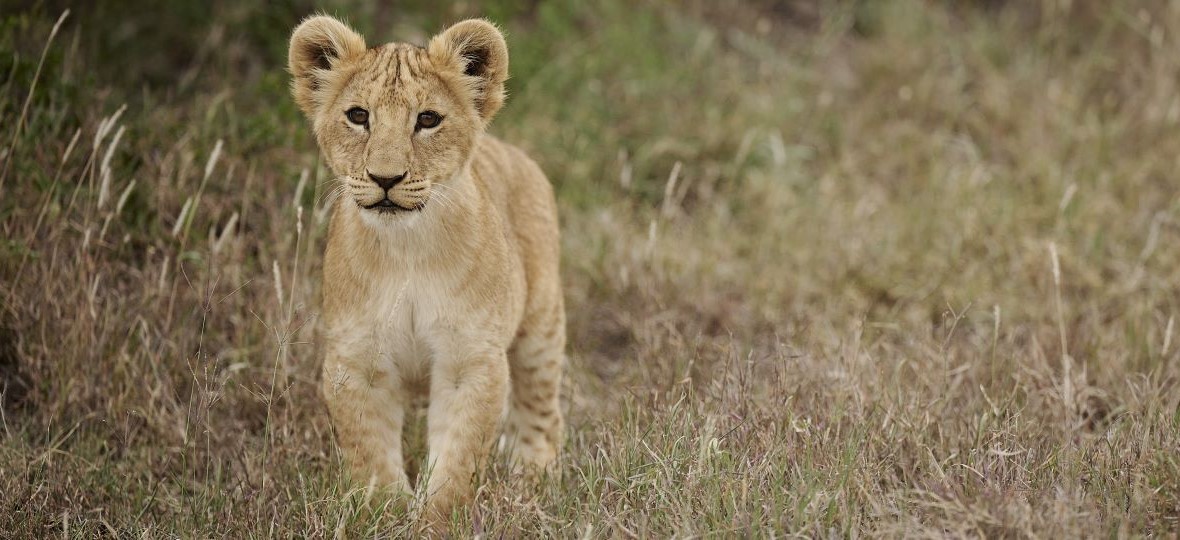BIG AND BOLD PLACES TO TRAVEL IN 2024
With 2024 being the first year that the entire world has fully reopened all its borders since the pandemic, there’s no shortage of places to travel. With this in mind, bigger and bolder are trending for 2024, says tour company Abercrombie & Kent, with travellers embracing long-haul destinations and travelling for longer to really get under the skin of new cultures through ever-more-immersive experiences – the new luxury.
And many are seizing the day, keen to be first to go to bucket-list destinations before everyone else does, says A&K.
“We are seeing more and more travellers wanting to really push the limits in 2024 and take the long-haul trips of a lifetime they’ve been dreaming about for a long time,” says, Founder and Abercrombie & Kent founder Geoffrey Kent. “Australia is back in business, while Kenya, Costa Rica and Antarctica are proving hugely popular with families. In fact, cold climates are the surprise new trend. And at the top of everyone’s wish list for 2024 is Japan.”
But as Japan’s popularity soars, savvy travellers are heading away from the bright-light-big-cities to find the ‘real Japan’ in certain lesser-known regions (more on those below). Others are looking to beat the crowds by heading to remote islands and little-visited wildernesses for truly intrepid adventures – from the deserts of the Arctic and Antarctic to the Sahara Desert in Morocco.
Here is A&K’s curated list of insights, travel trends, and 18 top destinations to watch in 2024:
EUROPE
Norway: For all the recent Scandi obsession, Norway remains the least explored of the trio. But record temperatures causing more holidaymakers to look north, it won’t stay that way for long. Many come to see the dramatic fjords and beautiful landscapes from sustainably minded, architect-designed wilderness lodges (keep an eye on the futuristic, energy positive Six Senses Svart hotel under construction), others come to tap into Norway’s trendsetting, health-boosting ice bath and sauna culture. But there are plenty of curious new attractions in its cities as well.
For a start, the tiny Arctic Circle city of Bodø (jumping off point for the Lofoten Islands) has been marked out as European Capital of Culture for 2024, which means a gamut of light festivals and land art, a Sámi theatre trilogy, and a fish-themed opera. In the capital Oslo, design hotel Sommerro (Art Deco interiors; rooftop restaurant) added its ultra-private 11-suite Villa Inkognito in April. The Munch Museum – rising, rippling in glass and aluminum on the Bjørvika waterfront – slipped in equally quietly during the pandemic, housing 26,000 of the artist’s works (including versions of his most famous, The Scream). A progressive, always-surprising Scandinavian star.
Paros, Greece: Paros is the new Cyclades sensation. Although only a short ferry ride from Mykonos or Santorini, Paros feels a million miles from the pulsating beach clubs of its neighbours. The lack of an international airport will keep it that way, although a gentle ebb of chic new hotels are drawing more in-the-know Greek island hoppers alongside the established crowd of European villa owners. Chilled-out Cosme, a 10-minute walk from the buzzy fishing harbor of Naoussa, is the sister hotel to game-changing Parilio near the sandy coves of Kolymbithres beach, while Avant Mar brought Nobu-restaurant glamour to the island this summer. Windsurfers will love the Meltemi winds that sweep across the south-east coast; culture-seekers love the arty hilltop villages and ancient monasteries. And everyone loves those spectacular, soul-soothing sunsets. For an offbeat side-trip, hop on the boat across to lo-fi Antiparos.
Slovenia: Sandwiched between the holiday honeypots of Italy and Croatia, it’s a mystery how Slovenia has remained so defiantly under-the-radar. It’s not for lack of good looks, running from the stunning Soča Valley with its vivid aquamarine river to the soaring Julian Alps and ever-so-pretty Lake Bled; while the capital of Ljubljana is pursuing a bold sustainable vision. The country’s food, too, is increasingly on the agenda: Slovenia got its own Michelin guide in 2020, and chef Ana Roš and her two-star countryside restaurant Hiša Franko remain the standard bearers for the area’s micro-local, forager-to-table cooking. This is Europe’s best-kept secret.
Paris: Paris is always a good idea – and never more so than in summer 2024, for the Olympic Games. As the French capital limbers up to light the Olympic cauldron, its hotel scene has been on a sprint of high-vaulting openings: opulent Le Grand Mazarin, all tapestry bed canopies and leopard-print upholstery; whimsical floral-filled La Fantaisie; sleek Hôtel Dame des Arts on the Left Bank; Belle-Époque-style townhouse Maison Proust in the Marais. The Seine is at the heart of Paris’s Olympic plan: for the opening ceremony flotillas will cruise through the city along the river, while triathlon swimmers are set to dive in from the ornate Pont Alexander III. There’ll also be fencing at the glass-roofed Grand Palais, beach volleyball beside the Eiffel Tower and various horsey events out at Versailles. Athletics aside, there’s news for gourmands, too: 400-year-old Paris institution La Tour d’Argent is back, dishing out its famous pressed duck with golden Seine views.
Saint Helena: Known among history buffs as the site of Napoleon’s second exile following his final defeat in 1815, Saint Helena is going to spark much wider appreciation with the release of Ridley Scott’s epic historical drama Napoleon, starring Joaquin Phoenix. Interest in Saint Helena is sure to be strong, but difficult to visit, since this is one of the most remote islands on earth, located 2,100 km west of the coast of Namibia. It boasts a population of less than 4,500 people who have been slow to embrace modern technology – cellular service was only introduced in 2015.
ASIA

Japan: The reopening of Japan to travellers at the end of 2022 saw a flurry of fresh places: glassy Tokyo hotels, creative hideouts in Kyoto and even a Totoro-filled theme park from cult-filmmaker Studio Ghibli. But for a place so associated with high-speed trains and fast-paced megacities, the most compelling way to see the country right now is on foot or by sea. The Nakasendo Way, an ancient route linking Tokyo to Kyoto, winds through mountains, little-changed post towns, bamboo forests and past waterfalls and hot springs. Walking its full length is a demanding hike, but it’s easy to pick up a shorter stretch or visit highlights along the way – come in April to catch the cherry blossoms.
Depart the southern end of the route and today’s foodie pilgrims should hotfoot it to Osaka, where street food stalls dish up takoyaki (octopus fritters) and okonomiyaki (savory pancakes). From there it’s the jumping off point to the Seto Inland Sea – best seen from floating ryokan guntû, which island hops to the temples of Miyajima and art island Naoshima (home to Yayoi Kusama’s Yellow Pumpkin, James Turrell installations and Tadao Ando-designed museums). Get off the beaten track and dive deeper into the real Japan.
China: With tourist visas and regular international flights returning for the first time since the pandemic, now is the chance to see the Land of the Dragon before everyone else. Walk through time in the Forbidden City, stroll the imposing Great Wall, stand guard with the Terracotta Army. Beyond the big sights and even bigger cities, however, the Chinese countryside is being rediscovered – in part thanks to the rural nostalgia of cottage core influencers leading to a boom in antique-filled village guesthouses and mountainside design hotels. Take a bamboo raft down the Yulong River or visit a Hani village to see life unchanged for thousands of years. Asia’s most beguiling and culturally rich giant is finally back.
Vietnam: Vietnam is one of Asia’s most exciting places to eat. So, it was no surprise when Michelin finally got the memo, releasing its first guide to foodie cities Hanoi and Ho Chi Minh in June 2023. The first four stars were dished out to fashionable fine dining spots, such as Ho Chi Minh’s Anan Saigon and its bone-marrow Wagyu beef pho or Gia in Hanoi with its in-house fermentation lab. But to sample the country’s real finger-licking food culture, take to the streets, tucking into everything from duck congee to pork skin salad.
Siem Reap: There’s much more to this lovely little town than Angkor Wat. A flourishing art and craft scene, burgeoning restaurant line-up spotlighting Khmer cooking and ever-growing gathering of design-led hotels (Angsana Siem Reap will soon become the latest) has made it a destination in its own right. One that in 2024 will become even more accessible via its new international airport (moving from the current site close to the famous temple complex). With tourists trickling back to Angkor Wat, explore lesser-known archaeological wonders such as the 12th-century temples at Banteay Chhmar, the still-being-uncovered site at Phnom Kulen or recently UNESCO-listed Koh Ker, home to Prasat Thom, Southeast Asia’s only seven-tiered pyramid.
LATIN AMERICA
Colombia: Colombia is one of the world’s rare ‘megadiverse’ countries: a staggering 10% of all the world’s flora and fauna can be found here. Look at its geography and you start to understand why; the natural contrasts are just astonishing: a dense Amazon jungle interior, coral white beaches along the Caribbean coast, isolated Sierra Nevada de Santa Marta mountains, coffee-carpeted highlands and wildly remote Guajira Peninsula, home to the Indigenous Wayuu people among salt flats and flamingo-lined lagoons. The once-troubled country is now investing heavily in sustainable travel, opening up some of these previously off-limits regions. But it’s not just about the like-nowhere-else nature – cosmopolitan cities are filled with salsa clubs and street art, shaking food and cocktail players and important social projects. The hottest spot in South America for intrepid travellers.
Costa Rica’s Nicoya Peninsula: This big-thinking Central American nation is a pioneer of ecotourism – over a quarter of the country is now protected as national parks, marine reserves and conservation sanctuaries – and a favourite destination for those seeking high-drama, low-impact trips. With more direct flights connecting the capital San José, big brand hotels are landing at easy-to-reach Papagayo, gateway to the Nicoya Peninsula. A revamp at Four Seasons Peninsula Papagayo and nearby Waldorf Astoria Guanacaste both launch in 2024, with more in the works.
Meanwhile, at the remote tip of the Nicoya Peninsula, the salt-sprayed beach town of Santa Teresa is the go-to spot for surfers and yogis, and the barefoot nomads who follow in their wake. At the moment they stay in a clutch of independently owned guesthouses, where dawn kundalini sessions are mixed with beach clean-ups, surf lessons with helping with local community outreach. In March, equally progressive hotel group Habitas will land on these Pacific shores, with its plastic-free policies, farm-to-table restaurant and meditation classes. Go now, before everyone else gets there.
AFRICA & THE MIDDLE EAST
Mount Kilimanjaro, Tanzania: Scientists predict that the glaciers at the top of Africa’s highest peak could disappear within the next two decades. Time is sadly running out to see Mount Kilimanjaro’s famous icefields and once-massive Furtwängler Glacier while trekking up the snow-capped volcano to its 5,895-m. peak. Would-be-climbers can do it in style, escorted by A&K expert guides who choose the best route up the mountain, allowing time to acclimatize to the altitude during the seven-day climb. The real difference though? Little luxuries, like a cozy cot that keeps you off the ground for a good night’s sleep – after a tiring scramble up the Barranco Wall. A breathtaking, go-now adventure.
Kenya: Where it all began for Abercrombie & Kent and where Geoffrey Kent brought about the inspiration for the film The Lion King when he hosted DreamWorks cofounder Jeffrey Katzenberg on safari in the Masai Mara spot now known as Pride Rock. With 2024 marking the 30th anniversary of The Lion King and the release of the new live action prequel, Mufasa, a renewed interest to the region is expected as a new generation is inspired to witness Kenya’s landscapes and wildlife for themselves.

Morocco: The travel world was shaken when an earthquake caused devastation in the High Atlas Mountains in September, its effects felt even in Marrakech’s Medina – but within days the country had pulled itself up by the bootstraps to welcome visitors again. The best way to support Morocco’s ongoing recovery is to visit, and there are plenty of fresh reasons to go in 2024. In Marrakech itself, the tremors didn’t stop a bubbling seam of exciting openings: architectural Maison Brummell Majorelle near the city’s famous botanical garden, riad Rosemary from artist Laurence Leenaert, equally art-filled retreat IZZA, blissed-out Farasha Farmhouse deep in an olive grove on the city’s fringes – as well as all-female-chef restaurant Sahbi Sahbi and hip nightspot Petanque Social Club.
The bohemian outpost of Tangier, too, is thrumming with fresh energy and new places to stay, from Jasper Conran (Villa Mabrouka) and El Fenn’s ex-GM William Smit (Villa Augustine) – don’t miss the locally-run art galleries and North Africa’s first arthouse cinema either. Resilient Morocco is still at its thrillingly creative best.
Saudi Arabia: It’s wild to think that until 2019 the only tourists to Saudi Arabia were religious pilgrims. Now, as part of the country’s Vision 2030 plan, this once-uncharted territory for travellers is marked with big-name hotels (from billowing tented camps to Red Sea resorts), ambitious cultural institutions (the first commissions in the ‘Valley of the Arts’ Wadi AlFann are to be unveiled in 2024) and futuristic developments (sustainable linear city The Line; sci-fi-esque ski resort Trojena Neom). But what is most awe-inspiring is still the most ancient: the carved tombs of Hegra deep in the AlUla desert, the towering sandstone columns of Wadi Al Disah, Jeddah’s 7th-century Al Balad neighborhood – while female guides leading the way show just how fast the country is reshaping itself to the outside world.
AUSTRALASIA
South Australia: Kangaroo Island – Australia’s answer to the Galápagos – was wiped out by bushfires in 2019, destroying wildlife, burning habitats, and razing to the ground its pioneering luxury eco-hotel, Southern Ocean Lodge. In December, the much-loved lodge emerged from the ashes, the culmination of a miraculous nature recovery program on the island.
South Australia is as vast as it is varied: from ocean to outback; from up-close wildlife experiences and exciting wine regions (world-class Barossa Valley and McLaren Vale; emerging Adelaide Hills), to wild coastal peninsulas and a roster of brilliant art and food festivals. October’s Australian Voice referendum further highlighted the importance of connecting with the country’s Indigenous communities too.
Out in the outback of the Flinders Ranges learn about the area’s immense cultural significance to the Adnyamathanha people at Ikara – The Meeting Place, a public art space that shares their story, and explore ancient engravings at Arkaroo Rock. This is an incredible immersion in the best of Australia.
THE POLES
The North Polar: An off-the-grid alternative to all the Antarctic cruises nosing across the Drake Passage, A&K’s North Pole Expedition Cruise is its inaugural voyage to the top of the world. When it departs from Longyearbyen in Svalbard this July, eco-friendly icebreaker Le Commandant Charcot will venture far beyond the point that other Arctic cruises usually go, charting a course ever-northwards into seldom-seen sea ice to the geographic North Pole. Onboard, guests can watch as the ship cuts through the marginal ice zone, spotting blue, rorqual and beluga whales, polar bears, and high arctic gulls in the white vastness. Venture off board to hike over the ice, kayak through open leads or take an invigorating polar plunge. It’s the ultimate unexplored frontier.
Antarctica: Ernest Shackleton was an Irish-born British explorer who is best known for his expeditions to Antarctica in the early 20th century. Despite never achieving his ultimate goal of being the first to reach the South Pole, Shackleton led three major expeditions to the Antarctic region and made several groundbreaking journeys and discoveries. In 2024, it will be the 150th anniversary of Shackleton’s birth in February 1874. This milestone year honours his daring expeditions, leadership, and contributions to Antarctic exploration.
First published at Travel Industry Today





